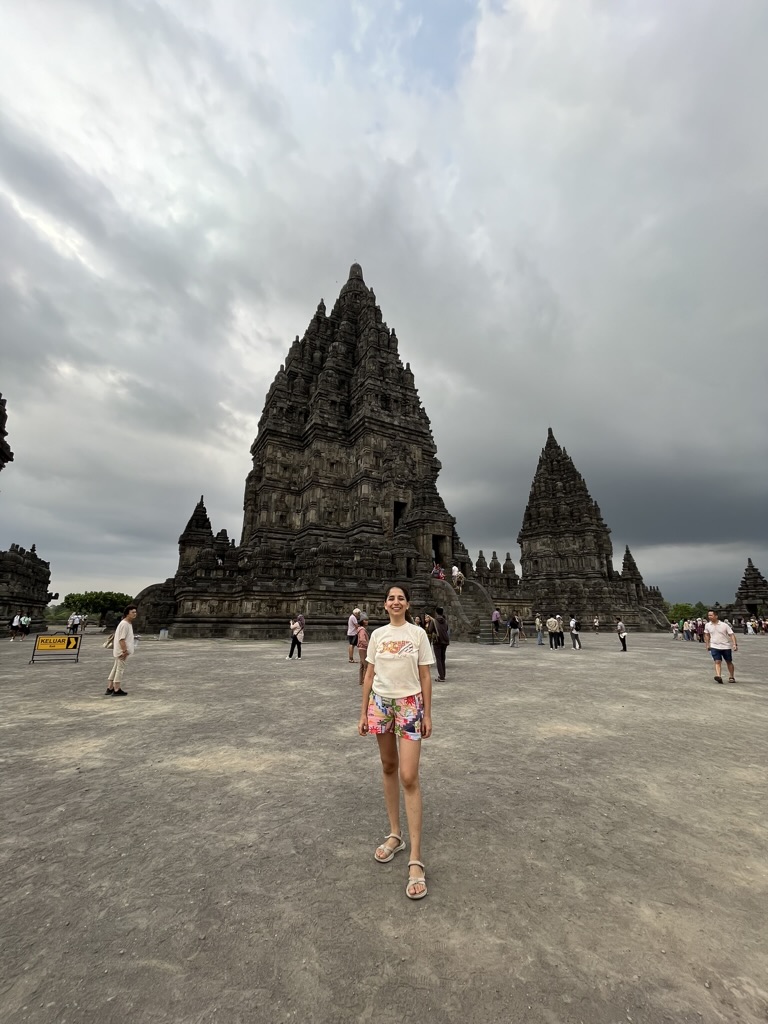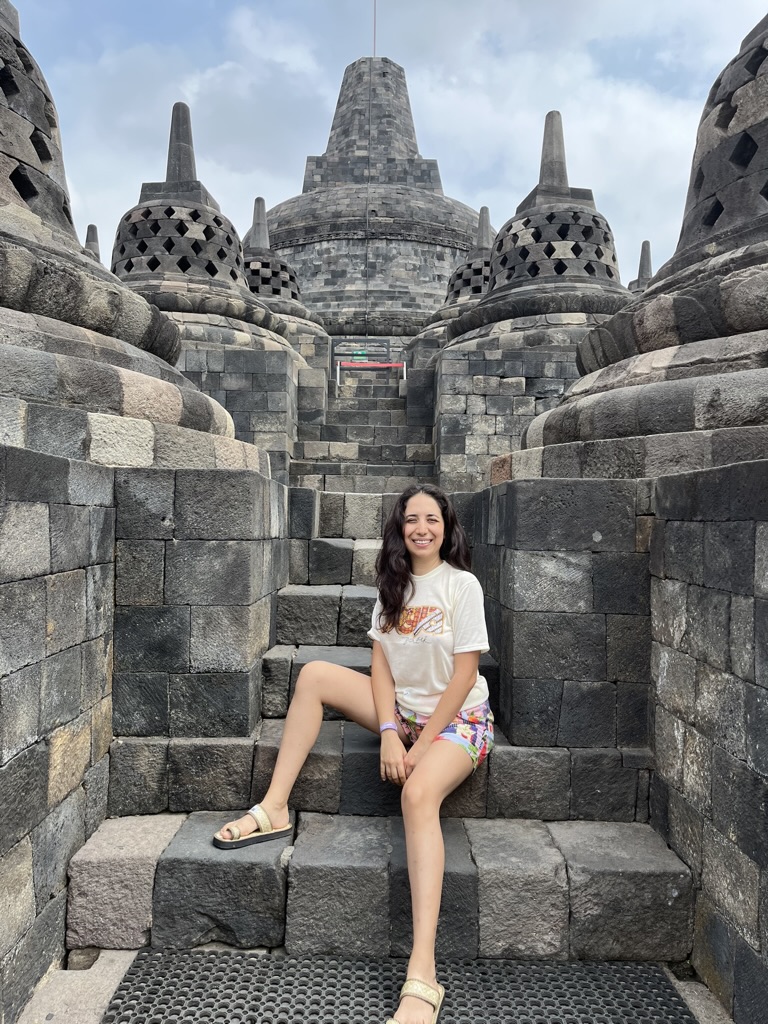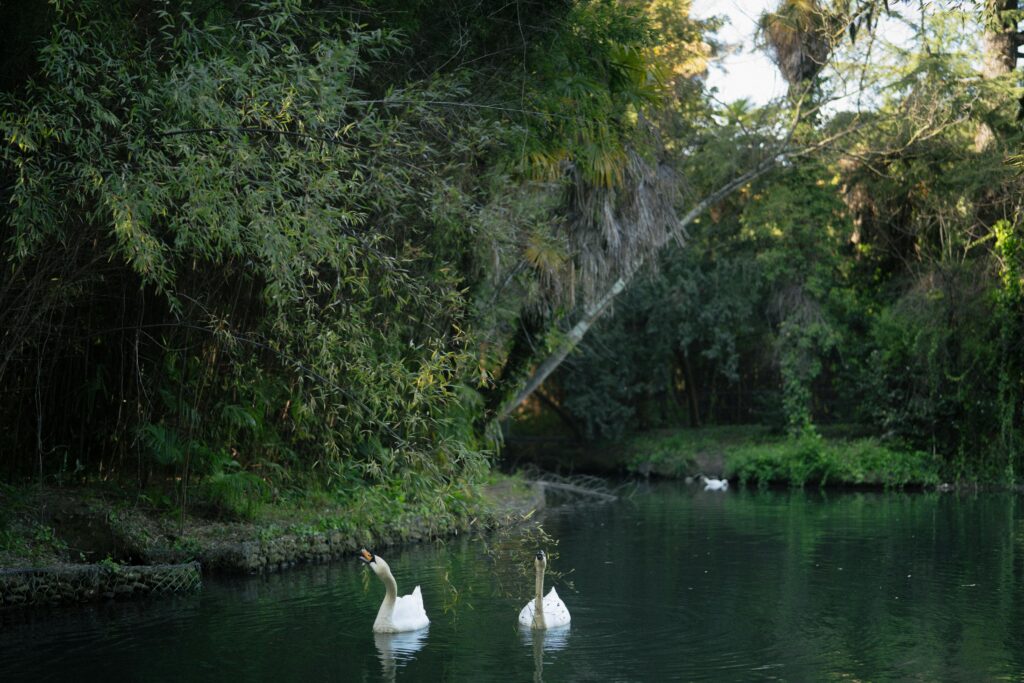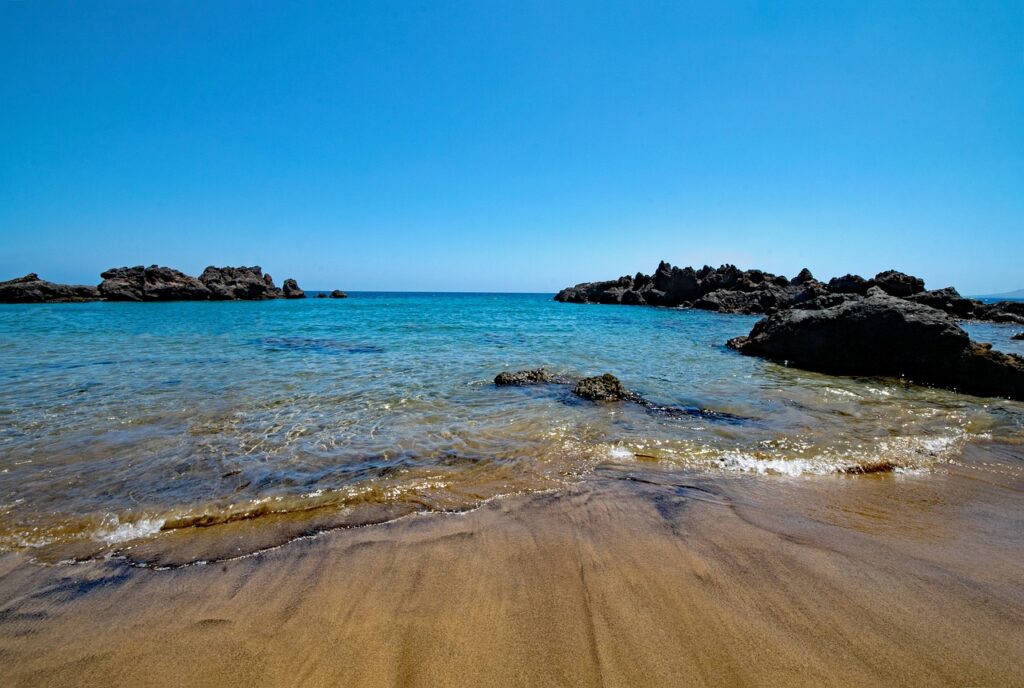Yogyakarta Enchantment: Prambanan, Borobudur and Jomblung cave experience
Yogyakarta, often lovingly referred to as “Jogja” by locals, is a vibrant city nestled in the heart of Java, Indonesia. Known for its rich cultural heritage, stunning temples, and warm hospitality, Yogyakarta is a destination that promises an unforgettable experience. Whether you’re an avid history buff, a nature lover, or someone seeking a unique travel adventure, Yogyakarta has something for everyone. This is an ultimate guide which will eplore main attractions and things to do in Yogyakarta, including magnificient Prambanan and Borobudur temples and adventerous attractions.
- Yogyakarta Enchantment: Prambanan, Borobudur and Jomblung cave experience
Things to Do in Yogyakarta
Exploring Yogyakarta is an adventure filled with historical sites, cultural experiences, and natural beauty. Here are some must-see attractions:
- Kraton Yogyakarta (Royal Palace):
- History: The Kraton is the heart of Javanese culture and the residence of the Sultan of Yogyakarta.
- Interesting Facts: The palace complex includes museums displaying royal artifacts and a beautiful garden.
- How to Get There: Located in the city center, you can easily reach the palace by taxi or becak (cycle rickshaw).
- What to Eat Nearby: Try gudeg, a traditional sweet jackfruit stew, at nearby eateries.
- Personal Tip: Visit early to avoid crowds and enjoy a serene experience.
- Taman Sari Water Castle:
- History: Once a royal garden of the Sultanate of Yogyakarta, it served as a place for rest and meditation.
- Interesting Facts: The complex includes bathing pools, a mosque, and underground tunnels.
- How to Get There: A short walk from the Kraton, or hire a becak.
- What to Eat Nearby: Enjoy fresh tropical fruits from local markets.
- Personal Tip: Don’t miss the underground mosque, a hidden gem.
- Malioboro Street:
- History: Malioboro is Yogyakarta’s main street, known for shopping and street food.
- Interesting Facts: The street is lively with street musicians, artists, and vendors.
- How to Get There: Easily accessible from many central hotels.
- What to Eat: Street food is a must! Try bakpia (sweet rolls) and satay.
- Safety Tip: Keep an eye on your belongings as it can get crowded.
- Affandi Museum:
- History: Dedicated to Indonesia’s famous painter, Affandi, showcasing his works and unique home.
- Interesting Facts: The museum offers a glimpse into Affandi’s life and artistic journey.
- How to Get There: A short taxi ride from the city center.
- What to Eat Nearby: Local warungs (eateries) offer traditional Javanese dishes.
- Personal Tip: Explore the house to see Affandi’s creative living space.
- Sumur Gumuling Underground Mosque:
- History: Part of the Taman Sari complex, used for religious and defense purposes.
- Interesting Facts: Known for its unique architectural design and historical significance.
- How to Get There: Accessible by foot within the Taman Sari complex.
- What to Eat Nearby: Enjoy a refreshing drink at a nearby café.
- Personal Tip: It’s a bit of a maze, so take your time exploring.
- Jomblang Cave:
- History: A natural wonder, Jomblang Cave is a vertical cave formed thousands of years ago.
- Interesting Facts: Known for its “heavenly light” phenomenon when sunlight streams through the cave opening, creating a surreal atmosphere.
- How to Get There: Located about an hour and a half from Yogyakarta, you can get there by hiring a car or joining a tour.
- What to Eat Nearby: Enjoy local delicacies at small warungs near the cave.
- Safety Tip: Wear sturdy shoes and be prepared for a bit of physical activity. The cave exploration includes rappelling down into the cave.
What Area to Stay in Yogyakarta
Choosing the right area to stay in Yogyakarta can enhance your travel experience:
- Malioboro Area:
- Pros: Central, bustling, close to major attractions.
- Cons: Can be noisy and crowded.
- Personal Choice: Ideal for those who love being in the heart of the action.
- Prawirotaman Area:
- Pros: Bohemian vibe, popular with backpackers, many budget accommodations.
- Cons: Slightly further from main attractions.
- Personal Choice: Great for solo travelers looking for a vibrant, artistic community.
- Sosrowijayan Area:
- Pros: Quiet, close to Malioboro.
- Cons: Fewer dining and nightlife options.
- Personal Choice: Perfect for those who prefer a quieter stay but want easy access to the city center.
Prambanan Temple: A Hindu Masterpiece Bathed in the Shadow of Merapi
Just a short journey from Borobudur lies Prambanan, a captivating Hindu temple complex dedicated to the deities Shiva, Vishnu, and Brahma. Towering spires pierce the sky, their intricate details whispering tales of ancient Hindu mythology. A fun fact: Prambanan’s majestic silhouette often shares the spotlight with the looming presence of Mount Merapi, a nearby active volcano!

Candi Prambanan: A Historical Marvel
Prambanan, meaning “the place where Brahma was perforated,” is named after a fascinating legend. Explore the main temple, adorned with reliefs depicting the epic Ramayana story of romance and mystery, and lose yourself in the beauty of the intricate sculptures. According to local folklore, the temple was built by the demon prince Bandung Bondowoso as a love offering to the princess Roro Jonggrang. The temple complex’s grandeur and mythological significance add to its allure.
Pro Tip for Solo Travelers:
Combine your trip to Prambanan with a visit to nearby Candi Sewu, a smaller yet equally fascinating temple complex. Many tour operators offer combined tours for both sites.
- History: Built in the 9th century, Prambanan is the largest Hindu temple in Indonesia.
- Interesting Facts: The temple complex is a UNESCO World Heritage Site and consists of several towering structures.
- How to Get There: Easily accessible by bus or taxi from Yogyakarta. I have personally enjoyed Prambanan temple and Ramayana ballet show with VIP seat!
- What to Eat Nearby: Several food stalls offer local snacks and meals.
- Personal Tip: Hire a local guide to learn about the fascinating history and legends.
Prambanan Temple: Myth and Architecture
- History: According to legend, the temple was built by a prince in a single night.
- Interesting Facts: The main temple dedicated to Shiva stands at 47 meters tall.
- How to Get There: A short drive from the city.
- What to Eat Nearby: Try the local coconut ice cream.
- Safety Tip: The area is safe, but always keep your belongings secure.
How to Get to Prambanan temple:
Visiting the magnificent Prambanan Temple is a highlight of any trip to Yogyakarta. Here’s a detailed guide on how to reach this iconic Hindu temple complex from various points in the city.
By Private Car or Taxi
Traveling to Prambanan by private car or taxi is a convenient and comfortable option, especially if you prefer a hassle-free journey.
- How to Arrange: You can book a private car through your hotel, a travel agency, or ride-hailing apps like Grab. My choice was to simply join the VIP tour that includes transportation from hotel.
- Cost: Expect to pay around IDR 150,000 to IDR 300,000 for a one-way trip.
- Duration: The drive takes approximately 30 to 45 minutes from Yogyakarta city center, depending on traffic.
- Advantages: Comfort, privacy, and the flexibility to set your own schedule and make stops along the way.
By Tour Bus
Joining a tour bus is an excellent option for those who want a guided experience.
- How to Book: Tours can be booked online, through your hotel, or at travel agencies in Yogyakarta.
- Cost: Prices vary depending on the package, typically ranging from IDR 200,000 to IDR 500,000 per person.
- Duration: The tour usually lasts half a day, including travel time and a guided tour of the temple.
- Advantages: Guided experience, the opportunity to meet other travelers, and detailed information about the temple’s history and significance.
By Public Bus
For budget-conscious travelers, public buses offer an economical way to reach Prambanan.
- How to Get There: Take a TransJogja bus with route number 1A or 1B from various stops in Yogyakarta to Prambanan Bus Terminal. The temple is a short walk from the terminal.
- Cost: The total cost is around IDR 3,600.
- Duration: The journey takes about 1 hour, including waiting times.
- Advantages: Cost-effective and an opportunity to experience local public transport.
By Motorbike
If you’re looking for an adventurous and flexible way to travel, consider renting a motorbike.
- How to Rent: Motorbikes with delivery options can be rented from numerous shops in Yogyakarta. Ensure you have a valid international driving license.
- Cost: Rental costs are typically around IDR 70,000 to IDR 100,000 per day, excluding fuel.
- Duration: The ride takes about 30 to 45 minutes.
- Advantages: Flexibility, the ability to explore scenic routes, and the thrill of riding through the Javanese countryside.
By Bicycle
Cycling to Prambanan is a fantastic option for those who enjoy a bit of exercise and want to see the countryside up close.
- How to Arrange: Some tour companies offer bicycle tours to Prambanan, including bike rental and a guide.
- Cost: Prices vary but generally start around IDR 200,000.
- Duration: The trip can take anywhere from 1.5 to 2 hours, depending on your pace.
- Advantages: Exercise, scenic views, and a unique and eco-friendly way to travel.
Borobudur: The World’s Largest Buddhist Temple
Borobudur, meaning “mountain of Buddhist stupas,” isn’t just visually stunning. Each of the 2,672 carved panels tells a story, guiding pilgrims along a path to enlightenment. As you ascend the levels, you’ll encounter depictions of everyday life, heavenly realms, and the cycle of karma.
Borobudur Sunrise: A Spiritual Awakening
Experiencing a Borobudur sunrise is magical, with the view of the sun rising over the stupas being unforgettable. Borobudur, the largest Buddhist temple globally, is located on the island of Java, just a short drive from Yogyakarta. This ancient temple is a marvel of human ingenuity and devotion. To make the most of your Borobudur sunrise experience, consider staying overnight in the nearby town of Magelang. This allows for an early start, ensuring you catch the first light. Arrive early and bring a flashlight as it can be quite dark before dawn.
- History: Built in the 9th century, Borobudur is a significant Buddhist monument.
- Interesting Facts: The temple consists of nine stacked platforms and a central dome with 72 Buddha statues.
- How to Get There: Most hotels in Yogyakarta offer early morning tours.
- What to Eat Nearby: Enjoy a hearty breakfast at a local restaurant after your early start.
- Personal Tip: Bring a flashlight and dress warmly as it can be chilly before dawn.
Sunrise at Borobudur: Practical Tips

- How to Get There: Opt for a guided tour for convenience.
- What to Eat Nearby: Post-sunrise, indulge in traditional Javanese breakfast dishes like nasi gudeg.
- Safety Tip: Stick with your group and follow the guide’s instructions.
How to Get to Borobudur temple:
Getting to Borobudur from Yogyakarta is an essential part of experiencing this magnificent UNESCO World Heritage Site. Here’s a detailed guide on how to make the journey:
By Private Car or Taxi
One of the most convenient ways to reach Borobudur is by hiring a private car or taxi. This option offers flexibility and comfort, especially if you’re traveling with a group or prefer a more personalized trip.
- How to Arrange: You can book a private car through your hotel, a travel agency, or ride-hailing apps like Grab.
- Cost: The price can vary, but expect to pay around IDR 400,000 to IDR 600,000 for a round trip.
- Duration: The drive takes approximately 1.5 hours from Yogyakarta city center, depending on traffic.
- Advantages: Comfort, privacy, and the ability to make stops along the way, such as at local markets or restaurants.
By Tour Bus
Joining a tour bus is a popular and hassle-free way to visit Borobudur. Many tours offer comprehensive packages that include transportation, guides, and sometimes meals.
- How to Book: Tours can be booked online, through your hotel, or at travel agencies in Yogyakarta.
- Cost: Prices vary depending on the package, typically ranging from IDR 200,000 to IDR 500,000 per person.
- Duration: The tour usually lasts half a day, including travel time.
- Advantages: Guided experience, meeting other travelers, and learning more about the site’s history and significance.
By Public Bus
For the budget-conscious traveler, taking a public bus is an affordable option.
- How to Get There: Take a TransJogja bus to Jombor Bus Terminal, then transfer to a bus heading to Borobudur. Look for buses marked “Borobudur” or ask the locals for assistance.
- Cost: The total cost is around IDR 30,000 to IDR 50,000.
- Duration: Expect the journey to take about 2 to 2.5 hours, including waiting times.
- Advantages: Cost-effective and a great way to experience local life.
By Motorbike
If you’re an adventurous traveler, renting a motorbike can be an exciting way to reach Borobudur.
- How to Rent: Motorbikes can be rented from numerous shops in Yogyakarta. Ensure you have a valid international driving license.
- Cost: Rental costs are typically around IDR 70,000 to IDR 100,000 per day, excluding fuel.
- Duration: The ride takes about 1.5 hours.
- Advantages: Flexibility, scenic routes, and the thrill of riding through the Javanese countryside.
By Bicycle
For fitness enthusiasts, cycling to Borobudur is a unique and eco-friendly option.
- How to Arrange: Some tour companies offer bicycle tours to Borobudur, including bike rental and a guide.
- Cost: Prices vary but generally start around IDR 300,000.
- Duration: The trip can take anywhere from 3 to 5 hours, depending on your pace.
- Advantages: Exercise, scenic views, and an intimate connection with the landscape.
Java Borobudur: A Cultural Exploration
Borobudur is not just a tourist attraction but a significant pilgrimage site for Buddhists around the world. The temple’s relief panels depict the life of Buddha and various Jataka tales, offering insights into Buddhist teachings and Javanese culture.
- History: The temple represents the Buddhist cosmology and the path to enlightenment.
- Interesting Facts: It was abandoned in the 14th century and rediscovered in the 19th century.
- How to Get There: Join a cultural tour to understand the significance of the temple in Javanese culture.
- What to Eat Nearby: Don’t miss local dishes such as mie goreng (fried noodles) and soto (soup).
- Personal Tip: Spend time in nearby villages to experience local life.
Borobudur Stupa: Symbolism and Significance

The temple’s design includes numerous stupas, each housing a Buddha statue. The largest stupa at the top symbolizes the attainment of Nirvana. Walking around these stupas while meditating or praying is a common practice among visitors.
- History: The stupas represent the path to Nirvana.
- Interesting Facts: The largest stupa is in the center, surrounded by smaller ones.
- How to Get There: Easily reachable as part of a tour package.
- What to Eat Nearby: Local markets offer fresh fruits and snacks.
- Safety Tip: Stay hydrated and wear comfortable shoes for exploring.
Safety Tips for Female Solo Travelers
Traveling solo as a female in Yogyakarta can be safe and enjoyable with these tips:
- Stay in Well-Lit Areas: Avoid walking alone at night and stick to well-lit, busy streets.
- Dress Modestly: Respect local customs by dressing modestly, especially when visiting temples.
- Keep Valuables Secure: Use a money belt or crossbody bag to keep your belongings safe.
- Use Trusted Transport: Opt for official taxis or rideshare apps like Grab for safe transportation.
- Join Tours: Group tours can be a safe and social way to explore the area.
Exploring Yogyakarta: A 3-Day Itinerary
Spiritual Day 1: Unveiling Yogyakarta’s Treasures
- Morning: Begin your adventure at Borobudur, the world’s largest Buddhist temple. This awe-inspiring monument dates back to the 9th century and boasts intricate carvings and stupas. Don’t miss the magical Borobudur sunrise—a serene experience that paints the sky with hues of gold.
- Afternoon: Head to Prambanan, a magnificent Hindu temple complex. Marvel at its towering spires and learn about the epic love story behind its creation. Explore the intricacies of Candi Prambanan, dedicated to the Trimurti gods—Brahma, Vishnu, and Shiva.
- Evening: Wander through the vibrant streets of Yogyakarta’s old town, exploring narrow alleys, street art, and local markets. Savor traditional Javanese cuisine, such as Ayam Goreng Tojoyo, a crispy fried chicken dish.
- Chekout the tour that combimnes all of the above activities in one go!
Vibrant Day 2: Cultural Immersion and Hidden Gems
- Morning: Visit the Kraton, the Sultan’s palace. Immerse yourself in Javanese history and witness traditional dance performances. Don’t forget to explore the nearby Taman Sari Water Castle, a serene retreat for the royals.
- Afternoon: Venture to HeHa Art Space, an offbeat gallery showcasing contemporary Indonesian art. Discover hidden gems like Ayam Goreng Suharti, another delectable chicken dish.
- Evening: Explore the lively Malioboro Street, lined with shops, street food stalls, and batik boutiques. Try local snacks and shop for souvenirs.
Adventerous Day 3 and Beyond: Personal Insights and Safety Tips
- My Personal Choice: As a female solo traveler, I recommend staying in the Prawirotaman area. It’s charming, safe, and filled with cozy guesthouses.
- Tours: Consider guided tours to explore Yogyakarta’s outskirts, including Mount Merapi—an active volcano—and the Jomblang Cave.
Conclusion
Yogyakarta is a city of contrasts, where ancient traditions meet modern life. From the majestic temples of Prambanan and Borobudur to the bustling streets of Malioboro, there is so much to explore. As a solo female traveler, you can safely navigate this vibrant city by planning ahead and staying mindful of your surroundings. Embrace the culture, savor the local cuisine, and let Yogyakarta’s charm captivate you.
Pack your bags, trust your instincts, and get ready for an unforgettable adventure in Yogyakarta. Your journey awaits!
Sign up for the best travel tips and adventures!



